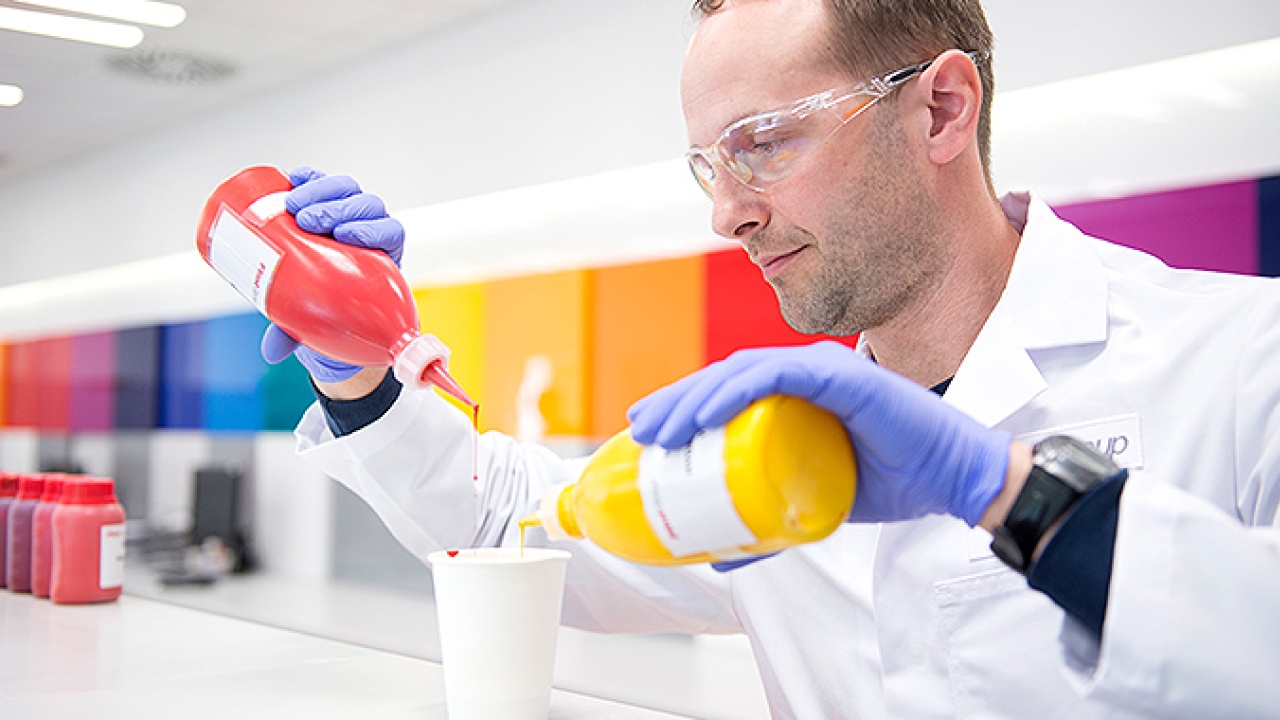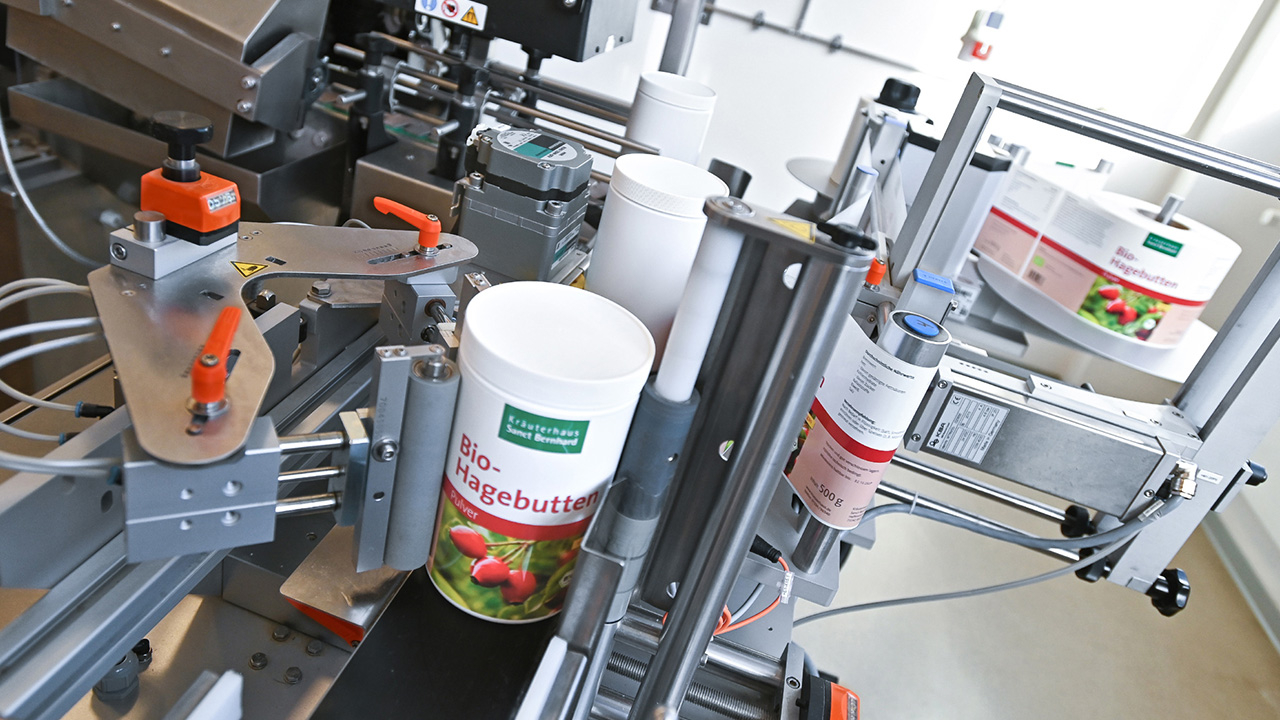Color’s crucial role

Color plays a vital role in how the consumer recognizes and recalls a brand. For special shades required for a brand’s logos on a label or package, of iconic elements of a graphic design. Spot color printing, based on a special recipe of base colors, is regarded as the most reliable method of reproducing the complete range of colors accurately and consistently.
Color matching to achieve spot color accuracy is a significant cause of lost value in the label converter’s workflow – not only is it hard to achieve accuracy, but it is subjective: every one of us sees color differently, according to genetic factors and levels of alertness.
In 2016, Flint Group conducted a survey of its label converting customers across Europe and North America, to identify what hinders productivity the most. It was a surprise to find color matching come out top, far ahead other challenges such as viscosity or curing.
To our amazement, operators were losing on average 2.5 press hours per day, trying to achieve color targets of within 1.5 DeltaE. The survey also found that some converters were mixing an increased number of colors per day, from at least seven to as many as 50.
The time spent on color matching has been rising for a number of reasons. Most obviously, brand owners’ quality expectations have risen, because consistent point-of-sale presentation is essential for building strong branding and sales. Second, brand owners regularly introduce new variations, and retire underperforming variations to sustain consumer interest and market share. As a result, converters need new matches for as many as half their color mixing jobs per day.
Trial-end-error formulations drain value
But it was the method, as well as the sheer numbers of matches, that was causing the problem. Traditionally, customers receive a color reference from the customer, then consult the Pantone formula guide, which provides a recipe for matte, coated and uncoated papers, and then mix the base colors and additives accordingly. The printed Pantone guide is an essential visual color reference, but for label and narrow web printers, adaptations to the recipes are often needed to achieve target. This is partly because of the sheer variety of substrates label printers use, and the many variables that affect the printed result, especially in flexo.
The properties, color and surface treatment of the substrate, together with anilox cell count and ink set used, all cause a variation in the reflection and absorption of light. A different recipe is therefore needed, to get consistent results when reproducing a single graphic design on different substrates – or even different labels on the same pack.
The example of a label converter supplying the drinks industry in Poland illustrates the challenge. The company performs 15 color matches when supplying bottle labels for a leading vodka brand: each of its five flavors featured a distinctive color shade, which needs a different formulation for each of the bottle’s three labels. While the front label’s vivid graphics capture attention, the back used a high anilox cell count to reproduce small text, and the neck substrate was silver instead of white.
The customers we surveyed told us that color matching was a complex, haphazard process involving trial and error. Recipes were rarely accurate on the first attempt, resulting in ink waste and significant scrap material. Matching accuracy differed from one operator to the next, making color consistency almost impossible. It took experience to adapt a generic Pantone formula to the application, and some employees have a better eye for color than others. So, a problem emerges of designating a color matcher on each shift. Ultimately, the human eye cannot provide a benchmark if we all see color differently: matching was costly guesswork.
Color-matching becomes measurable
But the good news is that color is objectively measurable. We recognized that, by developing a controlled, measurable process that took into account all the parameters influencing the results, we could transform color matching from guesswork into a science, that delivered repeatable quality without depending on human expertise. This led to the creation of Vivo Colour Solutions, consisting of two distinct services. The first is Vivo Colour Portal, a web portal communication tool between clients and our Global Colour Centre (GCC), in Lodz, Poland. The second is Vivo Colour Cloud, an intelligent database that translates the customer’s color target into an ink formulation to match the color target on the press, taking into account the substrate, ink set, and anilox settings, to ensure accuracy at the first attempt.
As of June 2020, Vivo contains approximately 350,000 UV flexo formulas, all tested at the GCC, combined from around 2,000 color shades, currently made using seven of Flint Group’s ink series, seven anilox film weights and four substrate types. The Vivo Colour Cloud covers UV flexo ink today and is being prepared to also host our water-based flexo ink UV offset and UV screen inks. The substrates selected represent roughly 80 percent of the average label converter’s usage requirements.
Crucially, Vivo Colour Solutions is a bespoke service, fine-tuned to the conditions of the user’s press. When a label converter signs up for a user license, we conduct a fingerprint, and an audit of anilox types used, to create a tailored search engine. Choice of anilox roll has a significant influence on the color, because higher anilox cell volumes mean a larger ink transfer and thus greater color density.
Vivo license holders access the entire color database through a secure search engine in the cloud, as well as a web portal service for support and new color enquiries. Accessing the database in Vivo Colour Cloud, the user receives the correct formulation in the short time it takes to select the job parameters, as prompted by Vivo’s search engine. Once logged in, the user enters the customer color reference, using digital color standards: as well as Pantone references, it accepts L*a*b* values, CxF files and color samples. The user then selects from a bespoke menu of anilox types. The software calculates the ink volume (cm3/m2). The substrate is then selected and the software provides the formulation, which may be printed out. Vivo can link up with software from ink logistics providers such as GSE Ink manager, enabling automatic communication of the ink formulation to the ink dispenser for automatic mixing.
The web portal, Vivo Colour Portal, is an interactive service, through which customers can seek technical support from the GCC team and also request new formulations, for example on a previously untested substrate, with results guaranteed within 24 hours. The database is constantly expanding, with hundreds of new color formulas created per week, in response to customer requests from the web portal, and new substrates being introduced by major labelstock manufacturers. At Flint Group, the innovation we do is first and foremost about helping label converters reduce ink-related costs. Experience teaches us that, to protect our customers’ margins that come under pressure from both discount-hungry customers, as well as rising overheads, the focus must be on reducing the total ownership cost. As label converters are discovering, Vivo Colour Solutions is standardizing, simplifying and accelerating the once complex process of color matching, and generating value worth up to 100,000 EUR per year.
Consistent quality
First, it gives consistently accurate results, covering the complete visible color spectrum at the first attempt, irrespective of who is matching the color – or where. The converter has assurance that the most complex brand colors will be faithfully reproduced on target on the press, from one shift to the next, and crucially, for multi-national printing houses – one location to the next.
Getting quality ‘right first time’ leads to significant material savings, improving ink yield and eliminating up to 100sqm of start-up waste per job. Consider also the productivity boost made possible by Vivo generating ink recipes in just a fraction of the time taken by conventional matching with the book. The value gained by two-and-a-half hours of extra machine uptime will only increase as new presses arrive on the market capable of greater quality and faster speeds.
Taking the need for human expertise out of color matching should also be welcome news for the operators concerned. It breaks the organizational silo and frees up valuable time that can be spent preparing for a smoother, faster job changeover, or creatively exploring new opportunities for leaner and smarter production.
Stay up to date
Subscribe to the free Label News newsletter and receive the latest content every week. We'll never share your email address.

